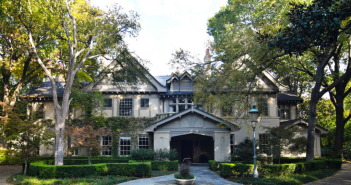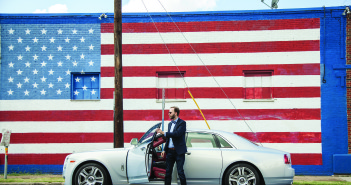Of glass, steel and sex
Can great architecture be erotic? Beyond the old adage that towers are phalluses erected to the great god Mammon, can a building be sexy in an intersexual and progressive way, for all gender proclivities, both men and women striving toward a fair and just cosmopolitan world in the 21st century? A crowd was aflutter with the possibility at the groundbreaking ceremony June 19 for the new 20-story tower, called McKinney & Olive, scheduled to open in Uptown in mid-2016, designed by Pelli Clarke Pelli Architects. The $225 million project’s designation as “a sexy building” was bandied about many times that morning, in the chic grandstanding of pundits and city boosters and by the principal architect himself, Cesar Pelli.
Sexiness comes with the territory for Pelli. A tall, elegant, stately 87-year-old Argentine- American, Pelli described the sensuality of the structure in terms of both genders. “For a man, it is a woman, and for a woman, it is a man,” he said. In either direction, McKinney & Olive bears the dynamism of life. In keeping with the biological metaphor of living structures, Pelli told the audience, “Today this building is being born!” With a billowing, curvy body whose primary glass volume bows in the middle and tapers at the top, the tower will be motion made habitable. The project seems to cast the influences of Eero Saarinen — architect of the birdlike TWA terminal at John F. Kennedy International Airport in New York and the man under whom Pelli cut his teeth — through the prism of decades of personal development as a designer, a brilliant reinventor of the skyscraper and a visionary with a global outlook.
The Uptown tower, with its 530,000 square feet of offices, restaurants and shops, will sit atop a two-story dining-and-shopping podium, emerging outward in oblique angles from a street-level green space. The parking garage will be clad in swaths of undulating, perforated stainless steel, the ripples of which will only increase the sense of movement. Atop it will be a roof garden. The whole project promises a rare combination of airiness and hard matter, with one-third of the site being “nonrevenue-producing,” or park space, according to Gregg E. Jones, principal architect at Pelli Clarke Pelli.
While relatively squat at 20 stories, McKinney & Olive nonetheless assures a place for Dallas in the ongoing competition for the tallest building in the world, if only by association. Pelli is known for being a design-master of height, and he is most famous for the 88-story Petronas Towers in Kuala Lumpur. Completed in 1998, the twin towers were the tallest buildings in the world for six years, succeeded by the 101-story Taipei 101 tower in 2003.The following year, Pelli was awarded the prestigious Aga Khan Award for Architecture for the Petronas project. (Pelli’s Malaysian towers are still the tallest twin towers in the world.) The liveliest moment in my conversation that June morning with a sincere and heartfelt Pelli unfolded, in fact, around those towers. With cities like Chicago and New York, the United States invented — almost a century ago — the modern and identity-forming urban type that is the skyline. Recognizing this, Pelli said, “The Petronas Towers were the first towers on that scale outside of the United States.” Rather than capitalist imperialism, though, he sees the spread of the symbolic skyline and the rivalry for the world’s tallest structure among emerging global powers as a matter of openness and cosmopolitanism. Skyscrapers signify not simply a healthy economy and (often) free trade but a unified and interconnected world. For Pelli, and now Uptown Dallas, it is a sensuous, sexy world as well.
CHARISSA TERRANOVA is associate professor of aesthetic studies at the University of Texas at Dallas and a freelance writer and curator. Her book, Automotive Prosthetic: Technological Mediation and the Car in Conceptual Art, was published in January by the University of Texas Press.







